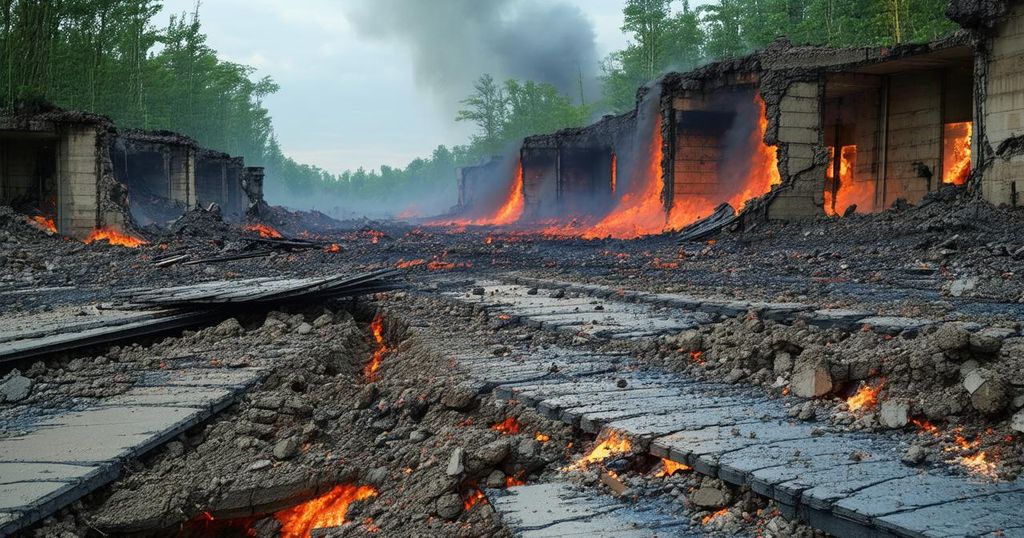What Was the Strongest Earthquake Ever Recorded?

This article discusses the five strongest earthquakes ever recorded, focusing on their magnitudes and impacts rather than casualties. The earthquakes include the Great Chilean Earthquake (9.5) in 1960, the 1964 Great Alaska Earthquake (9.2), the 2004 Sumatra-Andaman Earthquake (9.1), the 2011 Tohoku Earthquake (9.1), and the Kamchatka Earthquake (9.0) of 1952. Each event significantly affected numerous communities and led to advances in disaster management.
Throughout history, several seismic events have reached extraordinary magnitudes, demonstrating the immense power of earthquakes. This article presents a detailed analysis of the five strongest earthquakes ever recorded, highlighting their magnitudes, impacts, and the resulting tsunamis that reshaped coastlines and affected millions of lives. 1. The Valdivia Earthquake: Magnitude 9.5 The Valdivia Earthquake, also known as the Great Chilean Earthquake, occurred on May 22, 1960, in the Bio-Bio region of Chile. This seismic event is the most powerful recorded, registering a magnitude of 9.5. The earthquake caused intense shaking lasting for approximately ten minutes and triggered a series of tsunamis that impacted the Pacific Ocean’s coastal regions, including Hawaii, Japan, and the Philippines. The disaster resulted in an estimated 1,600 fatalities and left around 2 million individuals homeless. Additionally, it instigated the eruption of the Cordón Caulle volcano, compounding the devastation in the affected areas. 2. The 1964 Great Alaska Earthquake: Magnitude 9.2 On March 27, 1964, the Good Friday Earthquake struck southern Alaska with a magnitude of 9.2. This earthquake inflicted severe damage on Anchorage and surrounding towns due to ground subsidence and powerful shaking. The earthquake generated a tsunami that affected coastal communities from Alaska down to California. Despite the extensive destruction, the relatively low population density of the affected areas resulted in a death toll of 131. 3. The 2004 Sumatra-Andaman Earthquake: Magnitude 9.1 The 2004 Indian Ocean Earthquake, which registered a magnitude of 9.1 on December 26, 2004, was one of the deadliest in history. Striking off the northern coast of Sumatra, it created a catastrophic tsunami that affected multiple countries, including Indonesia, Thailand, and Sri Lanka. The tsunami resulted in over 230,000 deaths and widespread devastation, leading to international initiatives aimed at improving tsunami warning systems and evacuation protocols. 4. The 2011 Tohoku Earthquake: Magnitude 9.1 On March 11, 2011, a powerful earthquake measuring 9.1 occurred off the east coast of Honshu, Japan. The intense shaking persisted for over six minutes and triggered a devastating tsunami that ravaged the northeastern coast. Approximately 18,000 individuals lost their lives, and the earthquake subsequently caused a meltdown at the Fukushima nuclear power plant. The tsunami reached distant shores, including the Hawaiian Islands and the western coast of South America, prompting significant advancements in disaster preparedness and earthquake-resistant construction standards in Japan. 5. The 1952 Kamchatka Earthquake: Magnitude 9.0 On November 4, 1952, the Kamchatka Peninsula in Russia experienced an earthquake with a magnitude of 9.0. Although this monumental event had a limited death toll of 10,000 to 15,000 people due to the remote location of its epicenter, it nevertheless generated a powerful tsunami that affected the Aleutian Islands and caused substantial damage in Hawaii, costing about $17 million. The town of Severo-Kurilsk directly faced the tsunami’s impact, with immense waves sweeping away over a third of its population. The survivors subsequently rebuilt at a higher elevation, underscoring the lingering threat posed by large earthquakes even in sparsely populated areas.
Earthquakes are natural geological phenomena characterized by the sudden release of energy in the Earth’s crust, resulting in intense shaking and, often, catastrophic consequences. While many earthquakes occur globally each year, only a select few reach magnitudes significant enough to be labeled as the strongest. Magnitude is measured on the Richter scale, and the corresponding seismic waves can cause severe destruction and loss of life, particularly when they trigger tsunamis, which form as a result of underwater seismic activity. This article focuses on the earthquakes that recorded the highest magnitudes in history, examining their impacts and the subsequent human and environmental tolls they inflicted, distinct from those measured by death tolls or collateral damage alone.
In summary, the strongest earthquakes recorded highlight the profound and often catastrophic impacts seismic events can have on regions and communities. From the Valdivia Earthquake in 1960, which remains the most powerful to date, to the devastating tsunamis triggered by the 2004 Sumatra-Andaman Earthquake, these occurrences have spurred advancements in preparedness and response protocols globally. Understanding these powerful natural phenomena is crucial for mitigating risks and protecting lives in earthquake-prone areas.
Original Source: science.howstuffworks.com








